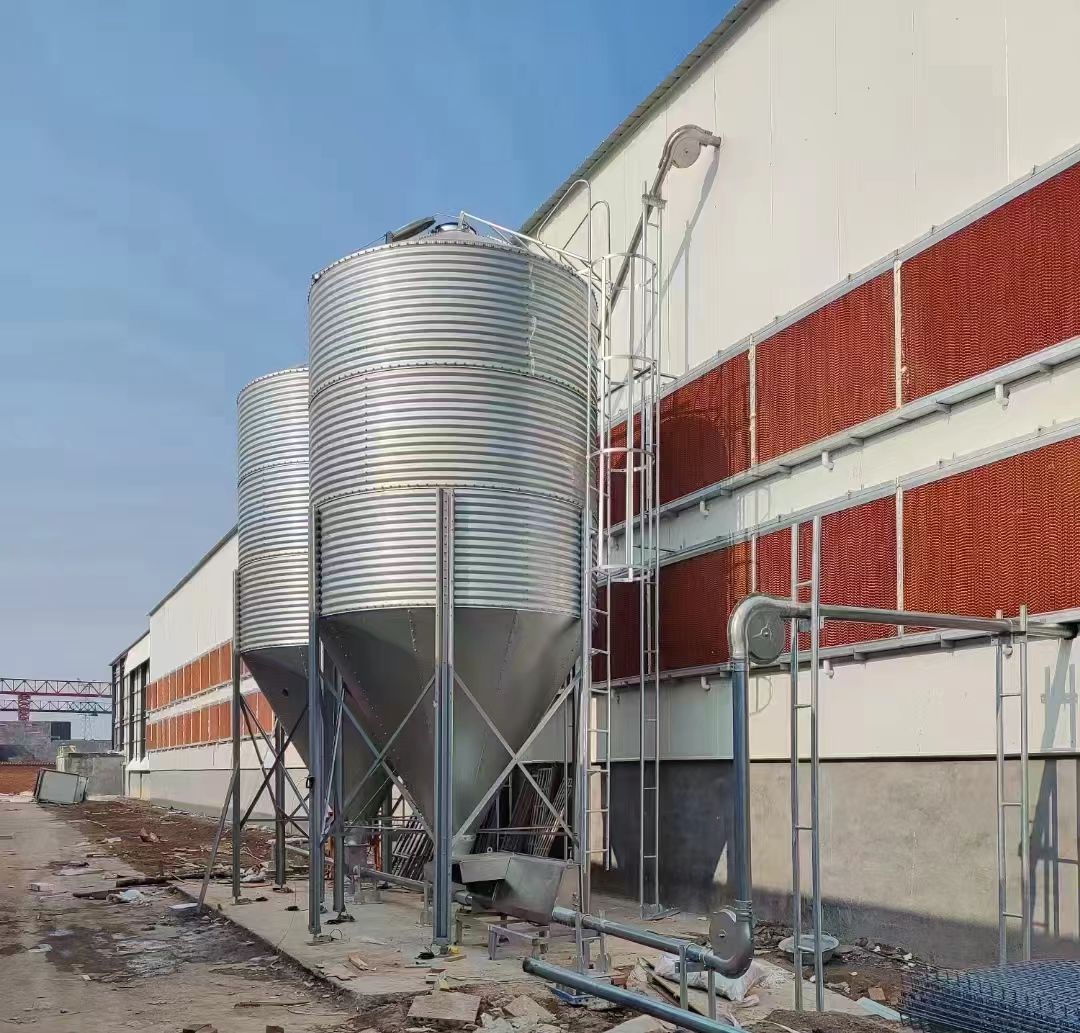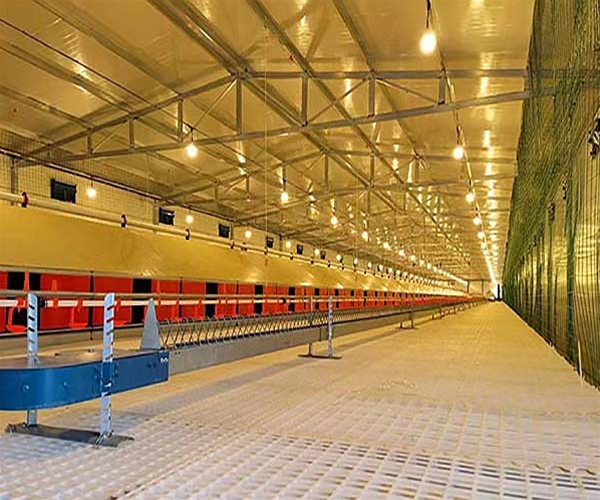Automatic feeding towers are vital components of automated feeding systems. They play a key role in improving farming efficiency and reducing labor costs. Whether it’s poultry farming, pig farming, or other livestock operations, these automated systems ensure precise feed delivery. This helps farm owners enhance productivity. In this article, we’ll introduce the working principle, main advantages, and applications of automatic feeding towers. This will help farms achieve efficient management.
How Automatic Feeding Towers Work
Automatic feeding towers use intelligent control systems for precise and automated feed delivery. The system typically consists of a feed storage bin, a conveyor system, and feeding components like screw conveyors or belt conveyors. Feed is transported from the storage bin through the delivery system to various feeding points. Smart sensors and electrical controls manage the system. The feeding schedule and amount are automated, ensuring that each animal is fed at the right time and in the right quantity. This approach reduces labor costs and increases feeding efficiency. It also minimizes human errors.
Key Advantages of Automatic Feeding Towers
- Precision Feeding, Reducing Feed Waste
The automated system ensures that each feeding zone receives the correct amount of feed based on animal needs. Compared to manual feeding, the system prevents feed waste and uneven distribution. This leads to healthier animal growth while minimizing feed wastage. - Reduced Labor Costs
Automatic feeding towers significantly reduce the need for manual labor. The system is fully automated and operates around the clock. It performs feeding tasks without human intervention. This allows workers to focus on other important tasks and saves on labor costs. - Improved Farm Management Efficiency
The intelligent control system of automatic feeding towers provides real-time monitoring. Farm owners can check feed usage and equipment performance. Data feedback allows managers to optimize feeding strategies. This improves overall farm management efficiency. - Feed Cost Savings, Boosting Economic Efficiency
Precision feeding ensures that feed is used efficiently. The system prevents overfeeding and underfeeding. This not only reduces feed waste but also maximizes feed utilization. As a result, farms can better control costs and improve profitability.
Applications of Automatic Feeding Towers
Automatic feeding towers are commonly used in large-scale farming operations, especially in poultry and pig farming. The system can deliver feed to multiple feeding points at once. This reduces the need for human intervention and improves feeding efficiency. For large farms, the automatic feeding system reduces management pressure. It ensures that each animal receives the proper nutrition at the right time, promoting healthy growth.
In addition, automatic feeding systems are flexible and adaptable to specialized farming phases. For example, during breeding or chick rearing, the feeding volume and frequency can be adjusted to meet specific animal needs.
Conclusion
Automatic feeding tower are essential for modern farming systems. They provide precise, automated feed delivery. This helps farm owners increase production efficiency, reduce labor costs, and ensure optimal feed utilization. If you want to improve farm management and reduce operational costs, investing in an automatic feeding system is a smart choice.
By incorporating intelligent, automated feed management, farms can improve their management practices. This also ensures better animal health and boosts overall economic efficiency. Choosing the right automated feeding system will support the sustainable development of modern farming.


